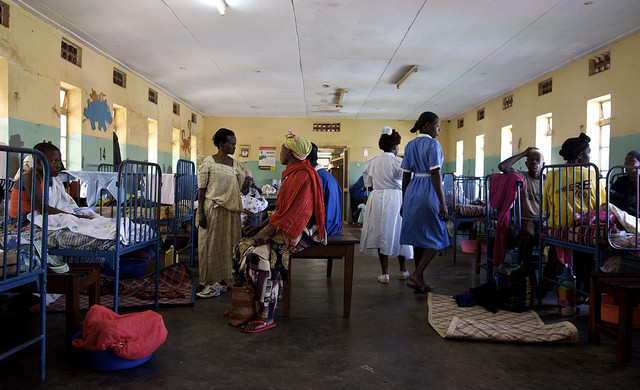Economic activity in Uganda has remained resilient despite multiple successive shocks, with real gross domestic product (GDP) accelerating from 5.3% in FY22/23 to an estimated 6% in FY23/24, a new World Bank report notes. The expansion was driven by oil-related construction activity and the growth of the mining and quarrying sector, which benefited from sustained increases in gold prices and an improved domestic environment for artisanal mining.

According to the 23rd edition of the Uganda Economic Update (UEU) released today, low inflation and recovery of real income and employment bolstered consumption, while private investment remained resilient despite unfavorable domestic and global financial conditions. As a result, exports and manufacturing orders increased between August 2023 and May 2024. Per capita income reached about $980 in FY22/23, and continued growth will push Uganda closer to the lower-middle-income threshold.
The UEU, a twice-yearly analysis of Uganda’s near-term macroeconomic outlook, projects a positive picture with GDP growing to 6.2% in FY24/25 and accelerating to more than 7% in the medium-term, due primarily to investment in the oil and gas sector.
“In addition to continued investment in the oil sector, robust coffee and gold exports are expected to boost economic activity in the coming year,” said Rachel K. Sebudde, World Bank Senior Economist and lead author of the current Uganda Economic Update. “Meanwhile, the full implementation of the Parish Development Model and other public investment programs, along with improvements in infrastructure and a growing energy supply, could further bolster aggregate demand. Over the medium-term, oil exports will transform Uganda’s trade profile, while the government’s efforts to promote tourism and agro-industrialization should help foster export diversification.”
There are, however, risks that threaten Uganda’s growth trajectory. These include the deterioration of global economic conditions due to rising geopolitical tensions that would reduce Uganda’s exports while distorting import supply chains; mounting inflationary pressures and prolonged monetary tightening that could constrain economic activity and reduce household incomes; delays in the implementation of major infrastructure projects; volatile foreign direct investment inflows; and the possibility of diminished donor financing as the 2026 election approaches.
Going forward, Uganda needs stronger expenditure rules to lessen the impact of shocks and manage the country’s transition to oil-exporter status, and also to increase social spending in areas like health to ensure equitable and sustainable growth. This UEU, which focuses on improving public spending on health to build human capital, notes that the government is spending much less on health compared to peer countries in the region. Due to underspending on education, health, and social protection, the productivity of Uganda’s next generation of workers is projected to be among the lowest worldwide. Households and external development partners finance a combined 85% of current total health spending. The share of government resources devoted to health spending has declined from 6.5% of total public spending in FY14/15 to 3.9% in FY20/21. Unless policymakers work to prioritize the health sector, Uganda is unlikely to achieve the health-related Sustainable Development Goals.
“Despite its low level of health spending per capita, Uganda utilizes its resources more efficiently than some of its peer countries,” said Mukami Kariuki, World Bank Country Manager for Uganda. “Uganda’s maternal health outcomes, for example, are better than those of most comparators. However, this is not enough. Uganda needs to combine increased health spending and efficiency gains from that expenditure to build the country’s human capital and reap a demographic dividend.”
The UEU recommends that policymakers should focus on, among others, increasing investments in primary healthcare; updating and expanding the use of performance agreements with private facilities and improving the investment climate in the health sector; the productivity of the health sector workforce; reducing the incidence of impoverishing health spending; and enhancing the quality of care and promoting client engagement in health-service design, planning, delivery, and oversight.
